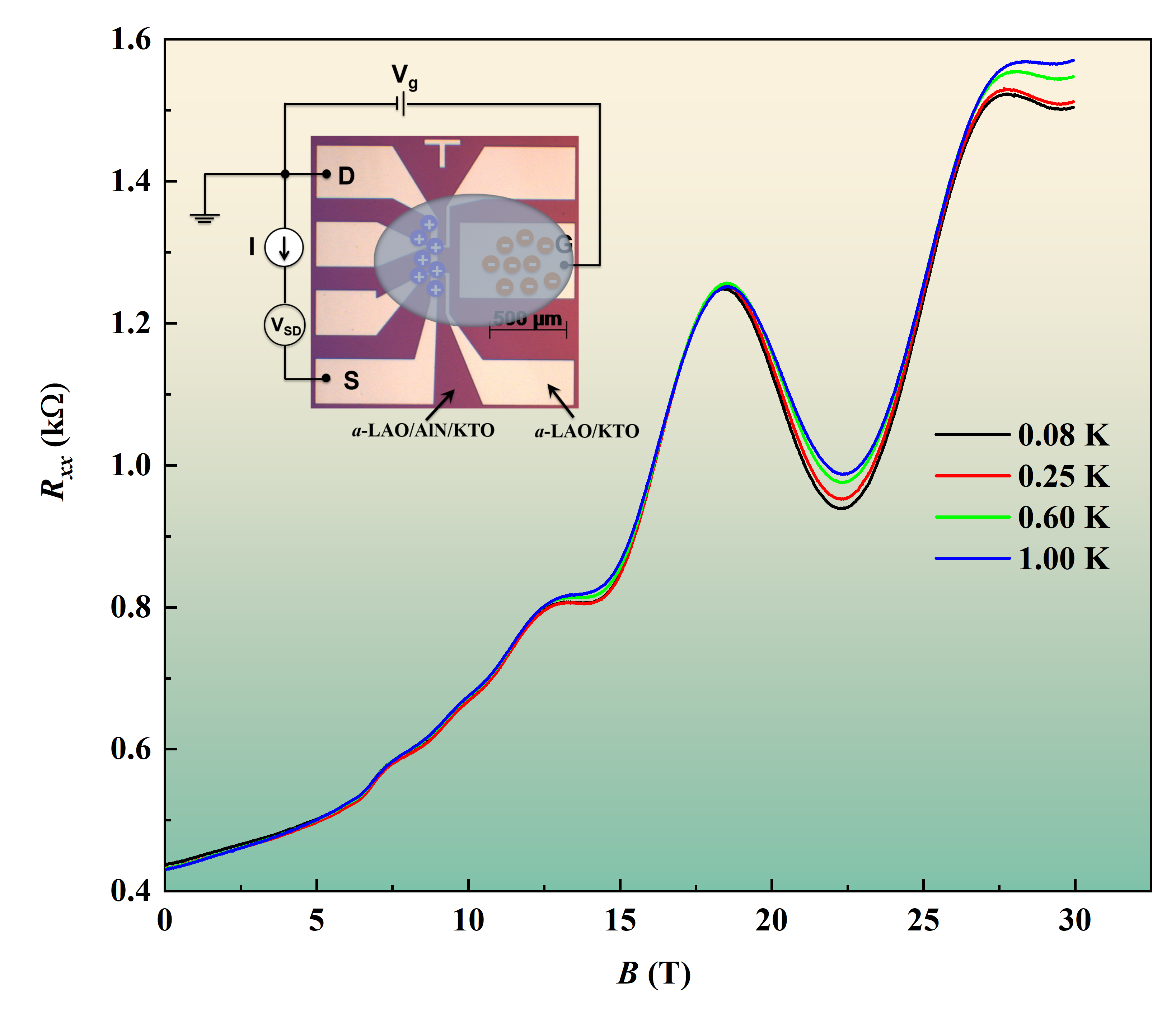Km Rubi and Uli Zeitler, HFML Nijmegen and Walter Escoffier, LNCMI Toulouse.
A team of researchers from HFML-Nijmegen, LNCMI-Toulouse, and the National University of Singapore investigated the electronic properties of the quasi two-dimensional electron gas (2DEG) at a new 5d-oxide heterointerface, LaAlO3/KTaO3. The team induced high-mobility carriers at the interface by implementing an ionic-liquid gating process at room temperature. In addition to the detailed information about the band structure of the 2DEG in KTaO3, this study paves a way to create a high-mobility 2DEG based on other 5d oxides for which constructing an epitaxial heterointerface is hardly possible. Discovered in 2004, the 2DEG at the interface between two insulators, LaAlO3 and SrTiO3, has developed into an intense research topic in fundamental condensed-matter physics with promising application perspectives. Exceptional findings in this system, such as superconductivity, magnetism, large Rashba spin-orbit interaction, and aperiodic quantum oscillations call for investigations on other related systems. Indeed, KTaO3 for which the conduction band is made up of Ta-5d orbitals instead of 3d orbitals in SrTiO3 is such a system with improved specific properties. For example, KTaO3-based 2DEGs exhibit a higher spin-orbit interaction, weaker electron correlation, higher mobility of the electrons, and a higher critical temperature of superconductivity. To investigate these novel systems experimentally, the team performed quantum-transport measurements on LaAlO3/KTaO3 heterostructures in high magnetic fields (continuous fields up to 30 T at HFML and pulsed fields up to 55 T at LNCMI) and at temperatures down to 80 mK. These extreme conditions are essential to resolve the quantum oscillations associated with narrowly spaced energy levels (figure). The oscillations in the magnetoresistance, measured in different field orientations, reveal confinement of the majority of electrons within a few atomic layers of KTaO3 from the interface. The oscillations of multiple frequencies and their temperature dependence evidence the occupancy of electrons in small-energy spaced light (0.2 electron masses) and heavy (0.5 electron masses) subbands originated from the Ta-t2g orbitals. Overall, the inferred subband properties are in good agreement with angle-resolved photoemission spectroscopy and band-structure calculations. The additional observation of magnetoresistance fluctuations in the low-density regime, which most likely originate from the quantum interference of electrons, demonstrates a prospect of oxide-based quantum electronic devices and a platform to investigate quantum-coherence transport in a correlated two-dimensional electron system.

Figure: Quantum oscillations in the magnetoresistance of an ionic-liquid gated α-LaAlO3/KTaO3 device measured down to 80 mK. The inset includes an optical microscope image of a Hallbar-patterned sample, a circuit diagram used for the ionic-liquid gating at room temperature, and a schematic of the gating process.
Electronic subbands in the a−LaAlO3/KTaO3 interface revealed by quantum oscillations in high magnetic fields, K. Rubi, S. Zeng, F. Bangma, M. Goiran, A. Ariando, W. Escoffier, and U. Zeitler, Phys. Rev. Research 3, 033234 (2021). https://journals.aps.org/prresearch/abstract/10.1103/PhysRevResearch.3.033234
Contact: rubi@lanl.gov , walter.escoffier@lncmi.cnrs.fr , uli.zeitler@ru.nl






